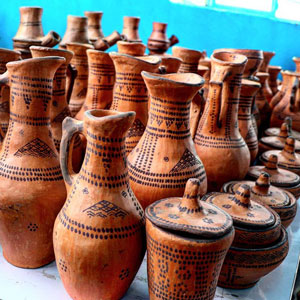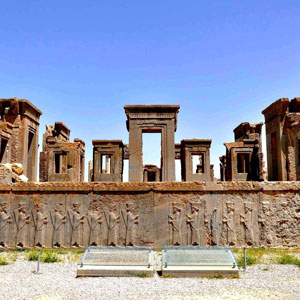 Signin with Google
Signin with Google Signin with Facebook
Signin with Facebook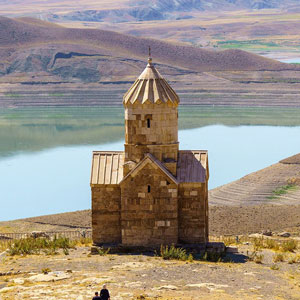
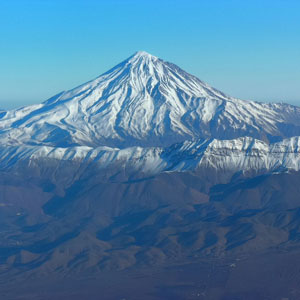 Places,Nature
Places,NatureLut Desert, and the Reminiscent of Monument Valley
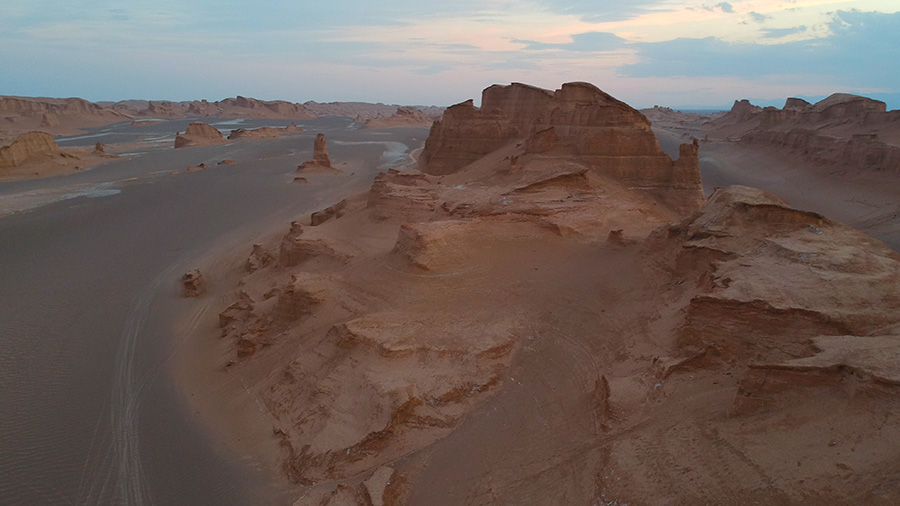
Dasht-e Lut, the Bermuda Triangle on Ground
In the vicinity of the ancient city of Shahdad which holds the world's oldest flag known as the "Shahdad flag", locates the great desert of the Iranian plateau. Passing through the west of Lut to the east zones seems still impossible in the 21st century and natives call the lost travellers "Luti".
At first glance, the Lut desert appears to the visitor's eyes like an amazing otherworldly land of rocks, sand, and salt. Strange castle-sand formations emerge from the ground next to sand dunes which can reach 300 meters high, and are among the tallest in the world. The Lut Desert also evokes "a confused mass of impassable tangled dunes" where life struggles to survive, as described in the book "Crossing Iran's Saharas" in the 1930s by Alfons Gabriel.
The Viennese explorer visited dozens of vast lands of deserts in the Middle East, but none has been as challenging and captivating as the second-largest Iranian desert, where dust storms and mirages almost took his life. In the Persian language, Dasht-e Lut could be translated by "Emptiness Plain". That's what Alfons Gabriel, Sven Hedin, Swedish geographer who crossed this desert on camels, incorrectly believed it was: A huge hostile land, empty from life.

The hottest place on the Earth
Stepping into the Lut desert is experiencing an epic journey to a land that has more in common with Mars than the Earth. Located about 150 kilometres from the city of Kerman, sand dunes spread to the horizons over 170.000 km which is one-tenth of Iran's area! No visitor can step foot on its hot sand alone, as once did those explorers, without risking getting lost in what is known as the hottest spot on the earth. The best time to visit the magic land of Lut is from April to May and fall.
For five years, this is indeed where a NASA satellite registered the highest temperature on the globe, reaching an unprecedented world record of 70.7 degrees Celsius (159.3 degrees Fahrenheit) in 2005. Black volcano lava which constitutes most of the desert's surface imprisons on the ground the heat coming from the rays of the sun.

The incredible hidden life of the desert
For centuries, explorers have assumed Dasht- e Lut to be deprived of life. Indeed, how could any creature survive in such a harsh environment? Yet in 2014, a team of international scientists has pierced the secret of life in Dasht- e Lut and found a vibrant ecosystem. Several insects and animals have been witnessed: reptiles, desert foxes, cheetah, and a species of falcons called "Balaban", which can reach 200km speed per hour in flight, and is thus known as the world's fastest bird!
What is the mystery of their survival, in a desert almost entirely devoid of plants? Scientists believe that it's the death of migrating birds, lost in the immensity of the desert that has provided a way to sustain other animals' lives. Surprisingly too, a "hidden sea" has been found lying under the hot surface of the sand, providing the water essential for life. Occasional rainfalls in spring can also drain water in some parts of the Lut Desert, definitely a unique ecosystem throughout the world.

The sand castles of the desert
What makes Lut Desert so enchanting to travellers is its unusual and marvellous Yardangs, the legendary earthy city called "Kaluts". These extraordinary protuberances have been caused by strong wind erosion over thousands of years, rising up to 150 meters above the ground, and creating colossal and dramatic shapes. At nightfall, these "Sand Castles" are enlightened by the pale lights of the moon, offering breathtaking scenery in the silent land of gravel.

They are so large that they can easily be seen from space. That's why it has been considered by UNESCO as the most spectacular example of Aeolian yardang formations as the first natural world heritage of Iran. At the same time, it's an exceptional example of an ongoing geological process, as the strong winds will continue to sweep these landforms endlessly.


